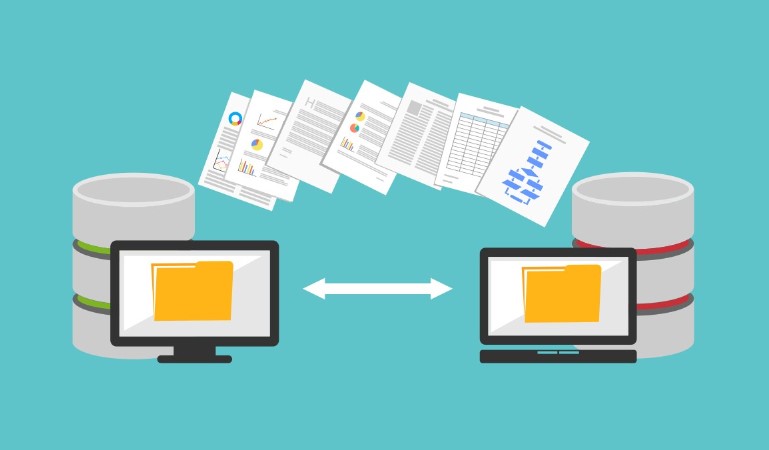
Data Migration Testing: Ensuring Seamless Data Transfers Guide
Data migration testing is a check cycle that ensures that all of the application’s predetermined useful and non-useful components are met after the transfer of the inheritance framework. The new framework will have minimal disruption or margin time, relevant information, and no information shortage. As we are probably aware, the application relocation to another framework could be in light of multiple factors, such as framework consolidation, old technology, enhancement, or other reasons. Thus, to guarantee smooth relocation of the live framework by wiping out those imperfections, it is fundamental to complete migration testing in the lab.
Migration Testing Techniques
Column Count and Data Comparison at the Database Level
This approach requires SQL information, as the need might arise to prepare content in light of the planning report and necessities. The QA group needs to make SQL questions that cover each part of a table as well as characterize the scope. They then think about the number of records and information moved relating to each attribute of the heritage data set and the objective data set. The advantage of this strategy is that the QA group can refresh the SQL scripts at whatever point they are required.
Information correlation should likewise be possible by utilizing macros. In this strategy, the information from the source as well as the target data set is extracted into a successful accounting sheet and then reviewed. Nonetheless, this approach isn’t good when managing an enormous amount of information.
UI Verification of Migrated Data
This method is significant in information relocation testing since it checks how the moved information will show in an application to an end client. Every piece of relocated information ought to hold its worth and configuration. Except if it is explicitly referenced not to do so. In this method, the information from the heritage application/data set is contrasted with the objective application to check whether the information is populated in the desired fields. QA designers ought to constantly take the dataset that has values in every one of the fields and check a couple of records from all the relocated dataset tables. Mechanization contents can likewise be utilized with test information from a legacy framework and compared against target applications.
Execution of Data Validation Scripts
It is another self-prearranged approach where the exactness and nature of relocated information are checked. Two distinct applications will have various mappings on the mapping table. It is not feasible to examine the user interface level whether or not each piece of data is moved by the target application or is necessary. Afterward, create information approval SQL scripts for information movement testing that will verify whether any moved data that deviates from the application’s basic pattern or style of behavior exists in the objective framework. For instance, two clients can’t have the equivalent username. Consequently, an SQL question can be composed to approve this in the objective data set.
Utilize this testing procedure after contrasting the information between the heritage data set and the target data set. Consequently, all disparities found while executing information approval scripts are not genuine bugs. Rather, contains information that needs cleanup and ought to be sent back to the client for their criticism. This strategy likewise ensures that the information is finished where no invalid or unclear qualities exist for required fields.
Approval Testing at the Application Level
Approval testing concludes regardless of whether the framework capabilities are as planned. An application with relocated information ought to work as it did before the information movement and ought to meet all predetermined business necessities. This method checks the strength of the application and guarantees smooth running with moving information. In this, an analyzer confirms an application’s core functionalities utilizing relocated information. Information is an evaluative part of any business. A little mistake in the check of moved information could bring about a gamble of disappointment at creation. To keep away from such dangers, the above information provides movement testing procedures. It can help an analyzer find any disparities in the relocated information. It prompts quality testing and a superior client experience.
Migration Types
Application Migration
For this situation, the whole application should be moved from one stage to another. For instance, relocating ASP.NET to Windows Azure or moving an application to the cloud. Testing ought to include distinguishing prerequisites and the extent of testing. Testing the stream in the heritage application and differentiating it from the enhanced one. If essential, test the new stream.
Server Migration
In this situation, the server information and the design are relocated to another server. Relocating the HP Box to the IBM Box could be a genuine model. While performing data migration testing, specialists ought to guarantee consistency with the objective server and that test data is taken care of. It is essential to ensure that there is no information defilement.
Data set Migration
In this situation, every piece of information in an application’s data set is moving to another data set. For the movement to find true success, the application needs to be steady, and the information needs to be substantial. RDBMS to another RDBMS or MongoDB could be two relocation models.
Operating System Migration
This is likely the most confounding sort of relocation. At the point when an application should be moved from one working framework to another. Similarly, chances emerge, and a huge number (for example, the interface, arrangement, and so on) could require re-planning. Here are a few models: Windows to Linux, movement to cloud-based VMs, or relocating to SaaS.



